Troy Fire Department Faces Multiple Problems While Fighting Second-Alarm Duplex Fire

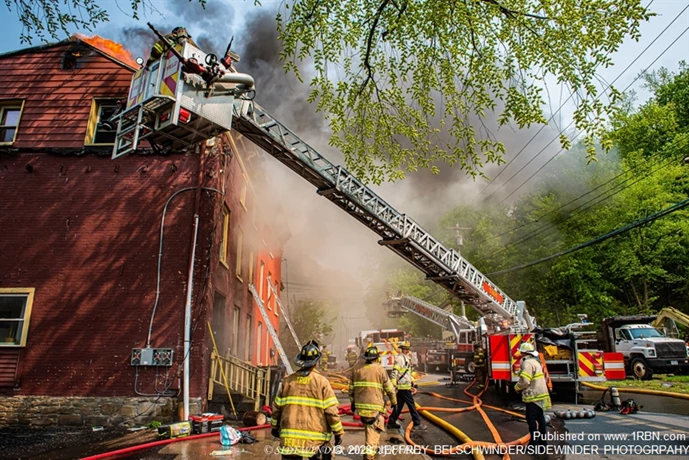
Photo by JEFFREY BELSCHWINDER/SIDEWINDER PHOTOGRPAHY
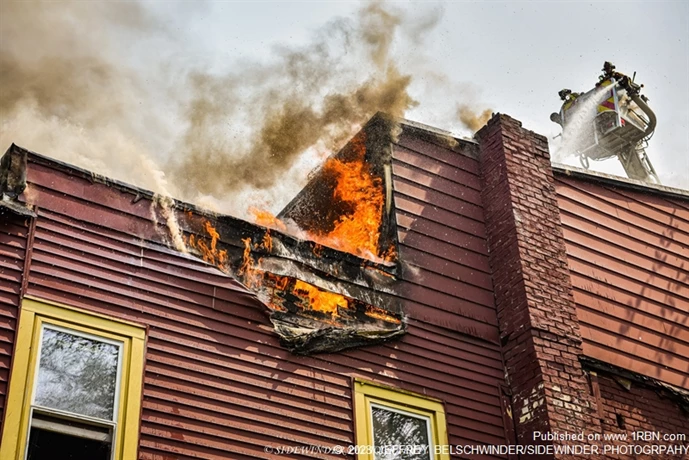
Photo by JEFFREY BELSCHWINDER/SIDEWINDER PHOTOGRPAHY

Photo by JEFFREY BELSCHWINDER/SIDEWINDER PHOTOGRPAHY
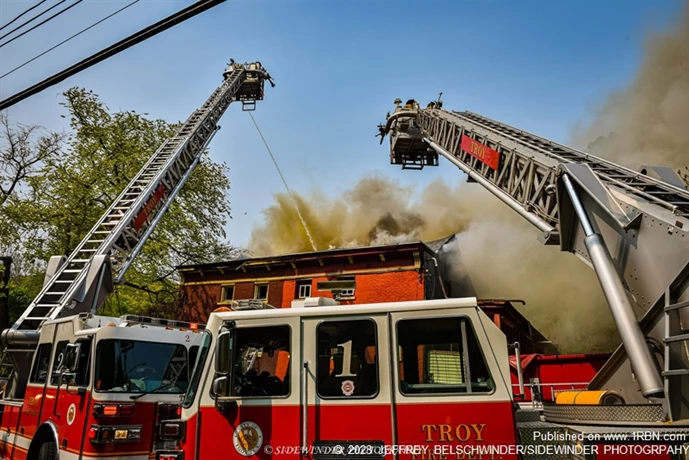
Photo by JEFFREY BELSCHWINDER/SIDEWINDER PHOTOGRPAHY
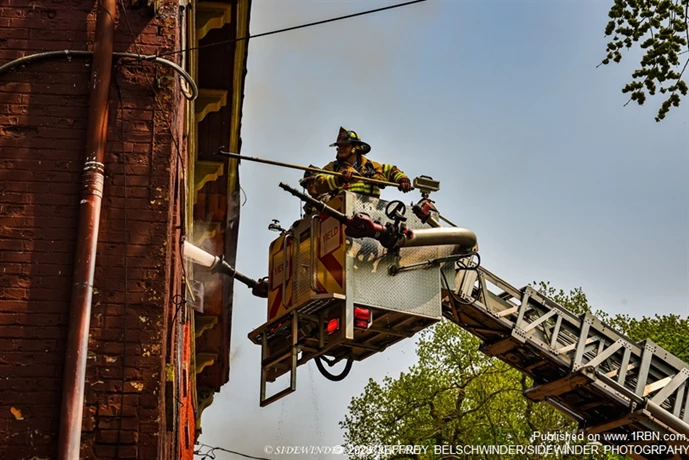
Photo by JEFFREY BELSCHWINDER/SIDEWINDER PHOTOGRPAHY
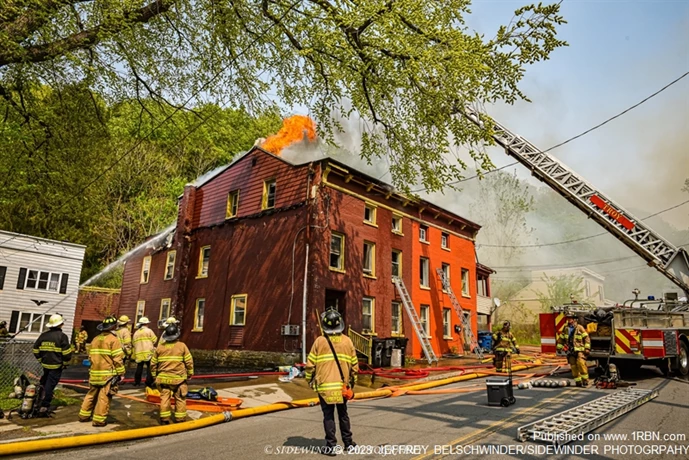
Photo by JEFFREY BELSCHWINDER/SIDEWINDER PHOTOGRPAHY
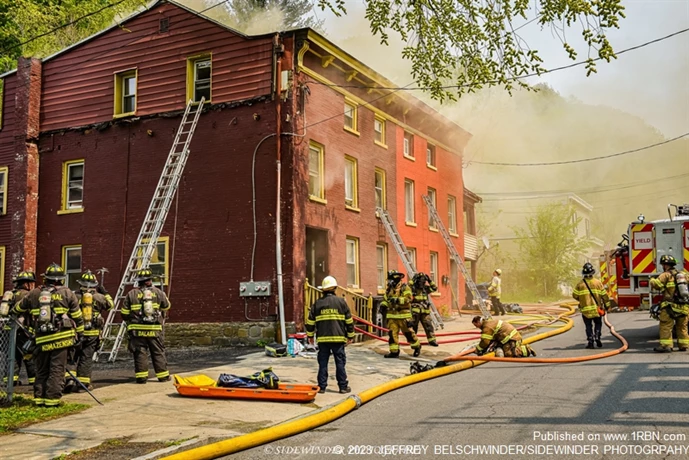
Photo by JEFFREY BELSCHWINDER/SIDEWINDER PHOTOGRPAHY
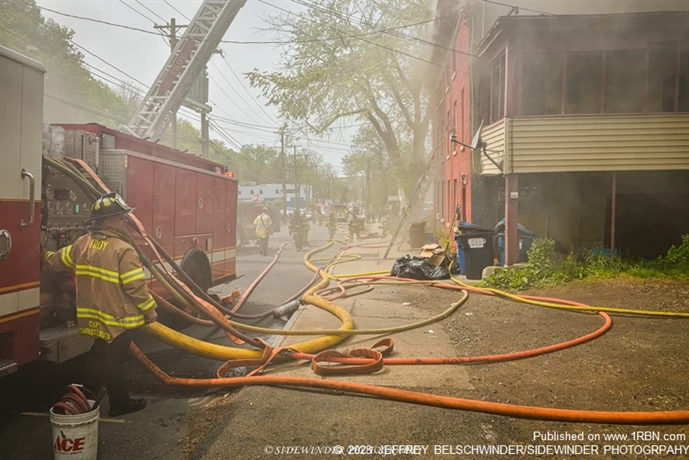
Photo by JEFFREY BELSCHWINDER/SIDEWINDER PHOTOGRPAHY
TROY, NY - On May 8th at 1:18 P.M., the City of Troy's Fire Department was dispatched to 21 Spring Avenue for a reported structure fire with multiple calls reporting smoke coming from the roof. As the box alarm was being dispatched for box 6-2-3 for Engines 6, 3 and 2, Trucks 2 and 1, Medic 4, and the battalion chief to the scene, Engine 1 was a few blocks away and quickly arrived on scene with the battalion chief, who notified the dispatcher that he had a Signal 30 with heavy smoke showing from a three-story brick duplex.
Engine 1’s crew deployed a one-and-three-quarter-inch hand line to the front door of the apartment. As heavy brown smoke continued to push from the building, Engine 6 arrived on scene and connected to the fire hydrant at Linden Avenue and laid into the scene. As additional units began arriving on scene, they went to work deploying additional hand lines and made their way inside of the building to find the seat of the fire. As firefighters began to ladder the building, Engine 1's crew requested pike poles to begin to pull the ceiling as the fire was in the attic. As firefighters made their way around the rear of the building, they had a heavier smoke condition pushing from the upper third-floor area and quickly laddered the building.
Firefighters inside the building notified the other units operating on scene that they had tin ceilings. Firefighters made their way to the roof and began to vent one side of the structure, and as they were doing so heavy fire blew out the other side of the building from the attic vent in 25 Spring Avenue. As fire conditions began to rapidly change, command notified the dispatcher to transmit the second-alarm, bringing the city of Watervliet's FD, Watervliet Arsenal FD, and Engine 4 to the scene. As heavy fire continued to travel the cockloft area, conditions on the inside of the building became unsafe and firefighters pulled from the building. Firefighters on the roof of the building kept making a push on the heavy fire pushing from the apartment on the third-floor, but were not having much progress.
As firefighters were attempting to connect to another fire hydrant, they learned that they did not have enough water pressure on Spring Avenue. Firefighters on Linden Avenue that connected into the fire hydrant were receiving extremely low pressure and needed more. Firefighters made their way back inside of the main fire building and requested another hand line inside the building in the rear. Firefighters on the roof of the building were notified that they had heavy smoke pushing from all portions of the brick on the side of the building and from the roofline, and were told to get off the roof by command. As firefighters were pulling off of the roof, a portion of it began to sag. As firefighters retreated with the hose line open on the roof, heavy fire began to push through the roof area where firefighters were just working.
Truck 2 began to set up with a master stream operation as firefighters exited the building again. Heavy fire blew through the roof in the back of the building and command evacuated a nearby house that was close to the structure. Firefighters began utilizing multiple hand lines from the exterior portion of the structure to knock down some of the heavy fire condition. As firefighters were going to go to master stream operations, the low water pressure from the hydrant nearby did not allow for the truck company to be able to flow water.
Firefighters in the rear of the building took out a window, tossed a hand line into it on the second-floor and climbed in. Firefighters that climbed into the window pulled a hand line to the third-floor area along with multiple hand tools and began to make holes in the tin ceiling. As firefighters continued to do so, conditions inside the building began getting worse. Firefighters utilized a hand line inside the building in an attempt to knock down a significant portion of the fire on the third-floor.
As firefighters continued to work, command in the front of the structure spoke with the water department and was told that they were in an area where all of the water lines had low pressure due to the area dead-ended, and the infrastructure was outdated. The Watervliet FD attempted to hook into a fire hydrant in front of the Culligan water facility, but the hydrant was dead. Firefighters working inside the building were exhausted attempting to pull the tin ceilings that had a plywood backer. Firefighters continued to hit the heavy fire condition on the third-floor with hand lines from the exterior portion of the structure. As firefighters were doing so on the 'Bravo' side of the building, the chimney began to pull away from the building. With command noticing conditions again changing and the water supply issue not improving, command made the last decision to pull everyone from the building, shut down all of the hand lines and let the truck companies go to work.
As the truck companies began to set up for aerial operations, firefighters connected to a hydrant further up on Spring Avenue, but realized that there was very little pressure coming from it. As both truck companies attempted to use their master streams they quickly ran out of water as the hydrants in the area could not keep up with two truck companies working. While this was going on, firefighters deployed a two-and-a-half-inch hand line to the side of the building that was well involved in case the plan of the master streams failed. Truck 2 opened up their master streams and firefighters in the bucket began to quickly knock down a significant portion of the fire. Firefighters were unfortunately only allowed to utilize one hand line on the side of the building during this operation due to the lack of water coming from the hydrants.
As firefighters in the truck company were able to darken down the heavy fire condition from the roof, firefighters placed the air packs back on and made their way back inside of the building and began to pull ceilings again to gain access to the remaining hot spots. As firefighters were working inside of the building the truck company stopped operations and the fire took off again. This time, firefighters utilized brute force to begin to pull down the ceilings along with a saw. As firefighters made a big enough hole, they utilized a hand line and quickly began to knock down the fire for the last time. Firefighters in the rear of the building continued to knock down the heavy fire condition that they were dealing with and finally brought the incident in the rear of the building under control. Firefighters remained chasing fire in 25 Spring Avenue for an extended period of time.
Fire investigators arrived on scene and began to conduct their investigation into the fire. No firefighters were injured on scene, but firefighters were absolutely exhausted from this fire, as it was extremely labor-intensive. During the investigation, it was determined that there was an electrical problem in the residence from a ceiling fan which caused the fire.
Multiple people were left homeless from the fire, and the building remains unsecured to this day. Firefighters remained on scene for an extended period of time and later that evening went back in to service.








